The country’s= iron ore imports are steadily closing in on exports, trends in the past three years show.

From 7.09 million tons (mt) in 2015-16, imports have spiked to 12.8 mt at the end of FY19, data released by the Union commerce ministry revealed. In contrast, exports of key steel-making ingredients have subsided from 30.48 mt to 16.19 mt in the comparable period, plummeting by 46.88 percent.
Imports of iron ore were driven by shore-based steel plants, which prefer to import more of higher grade ore. These plants imported larger quantities when the landed cost of the raw material was almost at par with domestic prices, which shot up to catch up with international prices.
As opposed to imports, exports of iron ore have fallen due to a fragile demand for low grade fines in international seaborne trade.
China’s steel mills pulled back imports of the baser grade ore as the government there tightened environmental regulations to meet emission norms. Indian producers also found it unviable to export richer grade ore as it attracted 30 percent duty.
However, the export outlook has improved in the last few months after a blast at Vale’s mines in Brazil shut off 70 million tons in annual supplies. The supply crisis has been magnified by a tropical cyclone striking Australia and impacting production at key mines. China is Vale’s biggest buyer of iron ore and to recompense the loss, it has scaled up buying from other markets, including India.
Global supply headwinds has meant that China is now buying more of lower grade fines from India. Inventory at China’s ports has touched multi-year lows and the country’s steel mills pursuing ramp-up plans are building up stocks.
This has revived export demand for inferior grade ore. Indian exporters are also finding their shipments profitable with international iron ore prices rocketing to five-year highs, sources said.
The outlook for exports have perked up as the international supply turmoil will not mellow anytime soon.
この記事は Steel Insights の July 2019 版に掲載されています。
7 日間の Magzter GOLD 無料トライアルを開始して、何千もの厳選されたプレミアム ストーリー、9,000 以上の雑誌や新聞にアクセスしてください。
すでに購読者です ? サインイン
この記事は Steel Insights の July 2019 版に掲載されています。
7 日間の Magzter GOLD 無料トライアルを開始して、何千もの厳選されたプレミアム ストーリー、9,000 以上の雑誌や新聞にアクセスしてください。
すでに購読者です? サインイン

Steel's Net Zero mission
The country’s commitment to achieving Net Zero within a targeted timeframe will now propel its steel sector towards a sustainable future in line with global trends.
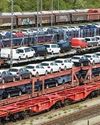
Fuel Price Hike, Supply Chain Disruption Hurt Festive Sales
Supply chain disruptions and fuel price hikes have hurt festive sales in a big way as most auto majors posted decline in sales in October.
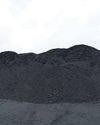
Seaborne coking coal offers remain range-bound
Seaborne coking coal offers moved in a narrow range in October amid global supply tightness and healthy spot demand.
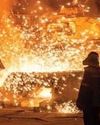
Global crude steel output down 8% in September
China manufactured 74 mt in September, fall of 21% y-o-y while India’s production went up by 7% to 10 mt.
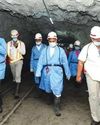
MOIL embarks on expansion projects
“Even though our country is blessed with manganese ore reserves, we import 50% of the domestic requirement. We have to lower our import dependence and save precious foreign exchange.” Ram Chandra Prasad Singh, Steel Minister

Iron ore handled by major ports down 17% in H1
The 12 major Indian ports handled 27 mt of iron-ore during H1 of 2021, down by 17% from 33 mt recorded for the corresponding period of previous year.
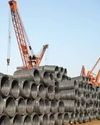
Shrinking China output to boost India exports
“In the third quarter of 2021, the company actively responded to the pressure from external policies, such as production curtailment and dual control system on energy consumption and intensity, as well as coal resource shortage and surging prices.” Baoshan Iron and Steel Co Ltd
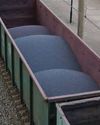
Indian Railways' iron-ore handling up 25% in H1
Indian Railways in April-September of 2021 (H1) transported 84 mt of iron ore, up by 25% over 67 mt during April-September 2020.
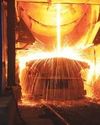
September crude steel production up 7.2% y-o-y
India’s crude steel production in September 2021 grew 7.2 percent to 9.547 million tons (mt) over September 2020 but was down by 3.2 percent from August 2021 output, provisional steel ministry data showed.

“Five enablers: way forward to sustainable cleaner steel”
Right and scalable technology, appropriate policy guidance by government, access to finance to fund transition, willingness of customers to pay for cleaner products and infrastructure for use of new technologies are the need of the hour for the sustainable and cleaner steel industry, according to Madhulika Sharma, Chief Corporate Sustainability, Tata Steel.